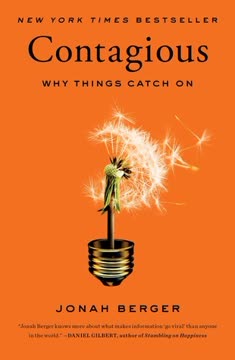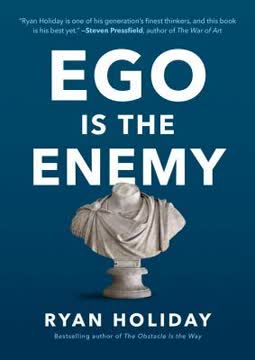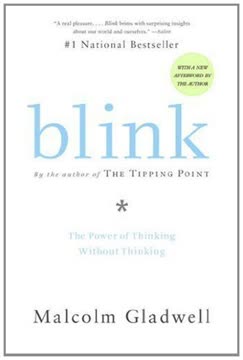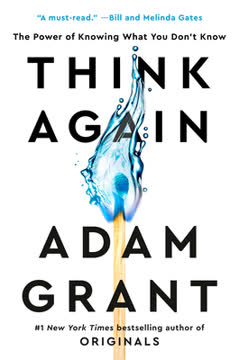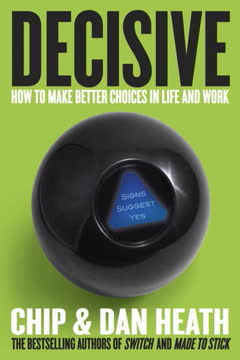Key Takeaways
1. The Curse of Knowledge: Why experts struggle to communicate effectively
It's hard to be a tapper. The problem is that tappers have been given knowledge (the song title) that makes it impossible for them to imagine what it's like to lack that knowledge.
The tappers and listeners experiment. In a study, participants were asked to tap out well-known songs, while others tried to guess the songs. Tappers predicted a 50% success rate, but listeners only guessed correctly 2.5% of the time. This illustrates the Curse of Knowledge: once we know something, it's hard to imagine not knowing it.
Implications for communication. This curse affects various fields:
- CEOs struggle to explain strategies to employees
- Teachers find it difficult to understand students' confusion
- Marketers fail to connect with customers
To overcome the Curse of Knowledge, communicators must:
- Empathize with their audience's perspective
- Use concrete examples and analogies
- Avoid jargon and abstract language
- Test their messages on novices
2. Simplicity: Find the core and express it concisely
To strip an idea down to its core, we must be masters of exclusion. We must relentlessly prioritize.
Finding the core. Simplicity isn't about dumbing down; it's about prioritization and focus. Southwest Airlines exemplifies this with their core idea: "THE low-fare airline." This simple concept guides decision-making throughout the organization, from rejecting expensive meal services to maintaining a single aircraft type.
Crafting simple messages:
- Use analogies to explain complex ideas (e.g., "atoms are like tiny solar systems")
- Create proverbs or catchphrases (e.g., "Names, names, and names" for local journalism)
- Focus on the single most important aspect of an idea
- Eliminate unnecessary details that don't support the core message
Remember: A simple message doesn't mean an incomplete one. It means finding the most essential element and expressing it clearly and concisely.
3. Unexpectedness: Break patterns to capture and hold attention
Surprise acts as a kind of emergency override when we confront something unexpected and our guessing machines fail.
Capturing attention. Our brains are wired to notice changes and unexpected events. To make ideas stick, we need to violate people's expectations:
- Break patterns (e.g., an unusual safety demonstration on a flight)
- Create mystery (e.g., posing a question about Saturn's rings)
- Use surprising statistics or facts
Sustaining interest. Once you have attention, maintain it by creating curiosity gaps:
- Pose questions or puzzles
- Introduce a mystery that unfolds over time
- Create a sequence of "aha!" moments
Examples:
- Nordstrom's surprising customer service stories
- The "Don't Mess with Texas" anti-littering campaign
- JFK's unexpected moon landing goal
By combining surprise with insight, you can make your ideas more memorable and impactful.
4. Concreteness: Make ideas tangible and memorable
Abstraction is the luxury of the expert. If you've got to teach an idea to a room full of people, and you aren't certain what they know, concreteness is the only safe language.
The power of concrete language. Concrete ideas are easier to remember and understand because they connect with our senses and experiences. Examples:
- "A bird in the hand is worth two in the bush" (proverb)
- "Put a man on the moon within the decade" (JFK's goal)
- The "unemployed college professor who drives a very, very used Volvo" (Trader Joe's customer)
Strategies for concreteness:
- Use sensory language and vivid imagery
- Provide specific examples and case studies
- Create hands-on experiences or demonstrations
- Use analogies that relate to familiar concepts
By making abstract ideas concrete, you help your audience visualize, understand, and remember your message more effectively.
5. Credibility: Use authorities, anti-authorities, and details to build trust
A person's knowledge of details is often a good proxy for her expertise.
Sources of credibility. To make ideas believable, use:
- Authorities: Experts, celebrities, or trusted figures
- Anti-authorities: People with personal experience (e.g., Pam Laffin for anti-smoking)
- Vivid details: Specific facts that imply expertise
- Statistics: Use them to illustrate relationships, not just numbers
- Sinatra Test: One example that proves credibility ("If you can make it there...")
- Testable credentials: Allow the audience to "try before they buy"
Examples of effective credibility:
- A nurse saving a baby by challenging a misleading heart monitor
- Concrete details in urban legends that make them seem real
- The "Dancing 73-year-old" in a dance company proving its commitment to diversity
Remember: Credibility isn't just about having authority; it's about demonstrating expertise and allowing your audience to verify claims for themselves.
6. Emotions: Make people care by tapping into feelings
If I look at the mass, I will never act. If I look at the one, I will.
The power of emotion. People are more likely to take action when they feel something. To make ideas stick, connect them to emotions:
- Use individual examples rather than statistics (e.g., Rokia vs. African poverty statistics)
- Tap into self-interest, but don't forget higher motivations (Maslow's hierarchy)
- Create empathy through stories and vivid descriptions
- Use analogies that evoke emotional responses
Strategies for emotional appeal:
- Appeal to identity (e.g., "Don't Mess with Texas" for Texan pride)
- Create a sense of belonging or purpose (e.g., Disney's "cast members")
- Use sensory language to make experiences feel real
- Connect your idea to personal values or aspirations
Remember: Emotion doesn't replace reason, but it provides the motivation to act on rational arguments.
7. Stories: Use narratives to inspire action and understanding
Stories are flight simulators for the brain.
The power of stories. Stories are a fundamental way humans learn and remember information. They:
- Provide context and meaning
- Simulate experiences, allowing mental rehearsal
- Inspire action by showing how others have succeeded
- Make abstract concepts concrete and relatable
Types of sticky stories:
- Challenge Plot: Overcoming obstacles (e.g., David vs. Goliath)
- Connection Plot: Bridging differences (e.g., Romeo and Juliet)
- Creativity Plot: Solving problems innovatively (e.g., MacGyver)
Using stories effectively:
- Collect and share relevant anecdotes from your field
- Use stories to illustrate key points or principles
- Encourage your audience to generate their own stories
- Practice storytelling to improve your delivery
Remember: A good story doesn't just entertain; it teaches, inspires, and motivates action.
Last updated:
FAQ
What's Made to Stick about?
- Core Concept: Made to Stick by Chip Heath explores why some ideas are memorable and impactful while others fade away. It introduces the SUCCESs framework to explain the principles of sticky ideas.
- SUCCESs Framework: The framework stands for Simple, Unexpected, Concrete, Credible, Emotional, and Stories, each contributing to the stickiness of ideas.
- Real-World Examples: The book uses various real-world examples and case studies to illustrate how these principles can be applied effectively across different fields.
Why should I read Made to Stick?
- Enhance Communication Skills: The book offers practical strategies to improve your ability to convey ideas clearly and memorably, making your messages resonate with your audience.
- Applicable Across Fields: The principles are relevant for anyone looking to influence others, whether in marketing, teaching, or leadership, and can be applied in both personal and professional contexts.
- Engaging Storytelling: The authors use compelling stories and examples to illustrate their points, making the book enjoyable and easy to understand.
What are the key takeaways of Made to Stick?
- Six Principles of Stickiness: The SUCCESs framework—Simple, Unexpected, Concrete, Credible, Emotional, and Stories—are essential elements for creating memorable ideas.
- Importance of Concreteness: Concrete ideas are easier to remember and understand than abstract concepts, and using vivid details can enhance the stickiness of an idea.
- Role of Emotion: Emotional connections are crucial for making ideas resonate with people, leading to greater engagement and retention of information.
What is the SUCCESs framework in Made to Stick?
- Simple: Focus on the core message by stripping away unnecessary details, allowing for easy understanding and recall.
- Unexpected: Capture attention by presenting surprising or counterintuitive information, breaking patterns to keep the audience engaged.
- Concrete: Use tangible, relatable examples to illustrate abstract concepts, helping people visualize and remember ideas more effectively.
How does the "Curse of Knowledge" affect communication in Made to Stick?
- Knowledge Imbalance: The Curse of Knowledge refers to the difficulty experts have in imagining what it’s like for someone who lacks their knowledge, leading to ineffective communication.
- Example of Tappers and Listeners: An experiment where "tappers" struggle to communicate a song to "listeners" illustrates how knowledge can hinder effective communication.
- Overcoming the Curse: Communicators should strive to simplify their messages and use concrete examples that resonate with their audience's experiences.
How can I apply the principles from Made to Stick in my work?
- Identify Core Messages: Start by determining the essential idea you want to communicate and use the Simple principle to strip down your message to its most critical elements.
- Engage Your Audience: Use the Unexpected principle to capture attention and maintain interest by incorporating surprising facts or anecdotes.
- Make It Concrete: Utilize vivid examples and relatable stories to illustrate your points, helping your audience visualize and remember your message more effectively.
What role do stories play in making ideas stick according to Made to Stick?
- Engagement: Stories engage audiences by providing relatable contexts and emotional connections, helping listeners visualize the message.
- Simulation and Inspiration: Stories serve as simulations, allowing audiences to see how to act in similar situations, and inspire action by showcasing relatable characters overcoming challenges.
- Moral Lessons: While stories convey morals or lessons, they do so in a way that is more impactful than simply stating the lesson, allowing for deeper understanding and retention.
What are some examples of sticky ideas from Made to Stick?
- Kidney Heist: This urban legend illustrates how a simple, vivid story can stick in people's minds due to its elements of surprise and emotional engagement.
- CSPI Popcorn Campaign: The Center for Science in the Public Interest effectively communicated the dangers of movie popcorn by comparing its fat content to a day’s worth of unhealthy eating.
- Nordstrom's Customer Service: Stories of Nordstrom employees going above and beyond create a vivid image of exceptional service, reinforcing the company's commitment to customer satisfaction.
What are the best quotes from Made to Stick and what do they mean?
- “If you argue ten points, even if each is a good point, when they get back to the jury room they won’t remember any.”: Emphasizes the importance of simplicity in communication, focusing on a single core message increases retention.
- “The Curse of Knowledge makes it hard to be a tapper.”: Highlights the challenges experts face in communicating effectively with novices, serving as a reminder to simplify and clarify messages.
- “A bird in the hand is worth two in the bush.”: Illustrates the value of concrete ideas over abstract concepts, reinforcing that simplicity and clarity lead to better decision-making.
How does emotion play a role in making ideas stick in Made to Stick?
- Emotional Connections: Ideas that evoke strong emotions are more likely to be remembered and acted upon, creating a lasting impact on the audience.
- Examples of Emotional Appeals: Campaigns like anti-smoking ads featuring real people with health issues resonate with audiences and drive home the message.
- Creating Empathy: By focusing on individual stories and experiences, communicators can foster empathy and connection, motivating people to take action.
Can you give examples of the six principles in action from Made to Stick?
- Simple: The phrase “It’s the economy, stupid” encapsulates a complex political strategy in a simple, powerful message.
- Unexpected: The "Don't Mess with Texas" campaign reframed littering as an affront to Texas pride, making the message more compelling.
- Concrete: Jared from Subway's weight loss journey provides concrete details, making the idea of healthy eating relatable and actionable.
What are some common pitfalls to avoid when trying to make ideas stick according to Made to Stick?
- Overloading Information: Avoid overwhelming your audience with too much information or too many statistics, focusing instead on a few key points.
- Neglecting Emotion: Don’t forget to tap into the emotional aspects of your message, as engaging your audience's feelings can enhance the stickiness of your ideas.
- Ignoring Audience Needs: Be mindful of the knowledge level of your audience, tailoring your message to their understanding and avoiding jargon that may alienate them.
Similar Books
Download PDF
Download EPUB
.epub digital book format is ideal for reading ebooks on phones, tablets, and e-readers.


